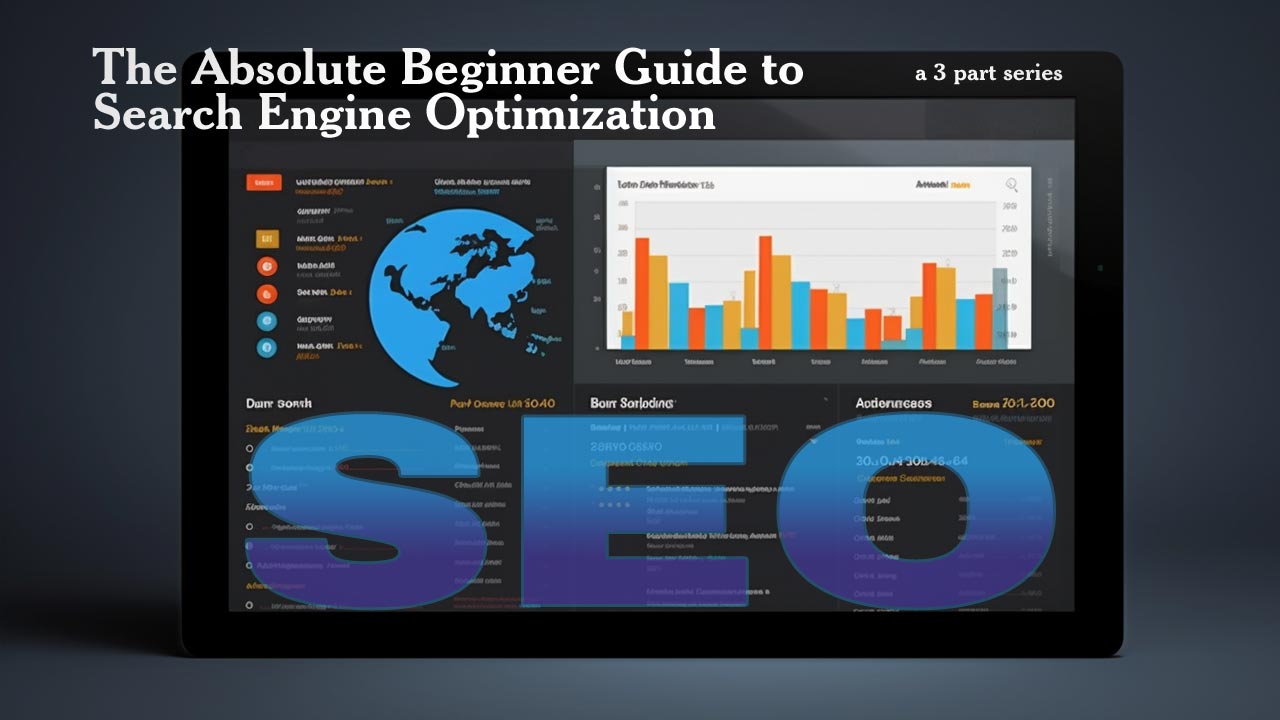This is Part 2 of a 3 Part Series.
Table Of Contents
- On-Page SEO: Optimizing Your Content for Search Engines
- Off-Page SEO: Building Authority and Trust
- Technical SEO: Ensuring a Seamless User Experience
Continue to Part 3 of this Series
On-Page SEO: Optimizing Your Content for Search Engines
On-page SEO, also known as on-site SEO, is the practice of optimizing elements on a website (as opposed to links elsewhere on the Internet and other external signals collectively known as “off-page SEO”) to improve search engine ranking and visibility. This can involve optimizing both the content and HTML source code of pages on a site.
The Role of On-Page SEO in Ranking Higher
On-page SEO is crucial for search engines to understand your website and its content, as well as identify whether it is relevant to a searcher’s query.
Well-executed on-page SEO helps search engines analyze your website and the content connected to it, and identify if your site contains relevant information a user is searching for. Moreover, it also provides search engines with essential signals to crawl your website and index pages appropriately.
Content Quality and Relevance
Search engines are designed to provide the best results for users. This means delivering results on search engine pages that are not only high quality but also relevant to what the searcher is looking for.
The content on your site is the main factor for search engine crawlers. Therefore, it is crucial to create high-quality content that serves the user intent. This content should be original, filled with naturally integrated keywords, and provide comprehensive information on a given topic.
Site Architecture and Navigation
A well-planned site architecture reflected in clear navigation links helps search engines crawl your site quickly and comprehensively. This also helps your audience to understand your site and find what they need quickly. A win-win for both parties!
Essential On-Page SEO Elements
On-page SEO is multifaceted, encompassing a variety of different components. Here are some of the most critical elements:
- Title tags: Each of your pages should have a unique title tag, which describes that page’s content. Title tags are displayed on search engine results pages (SERPs) and should be short, descriptive, and attention-grabbing.
- Meta descriptions: These brief snippets describe the content of a page. They appear under the clickable links on the SERP and should be compelling enough to persuade searchers to click through to your content.
- URL structures: A URL that includes keywords can provide both search engines and users with more information about what the page contains. Moreover, a well-structured URL provides both users and search engines with a more comprehensive understanding of what the destination page is all about.
- Header tags: These are used to separate headings and subheadings within your content from other types of text (like paragraph text). They run from h1–h6 and can provide search engines with information about the structure and content of your page.
- Alt text for images: Also known as “alt attributes” and “alt descriptions,” alt text is used to describe to search engines what an image is showing, providing a textual alternative to visual content.
- Internal links: These are links that go from one page on a domain to a different page on the same domain. They are commonly used in main navigation and can enhance your site’s structure and hierarchy.
Keyword Usage and Content Optimization
Keywords are fundamental to the search process. They are the building blocks of language and of search. In fact, the entire science of information retrieval (including web-based search engines like Google) is based on keywords.
As such, keyword usage and placement are fundamental aspects of on-page SEO optimization. They help search engines understand what your content is about and help users find relevant information. Be sure to include keywords in your meta tags, title tags, and content where relevant and natural.
To conclude, on-page SEO is a dynamic process. It involves various aspects, including ensuring high-quality content, optimizing HTML codes, and structuring your site effectively. It is essential to keep your site and its content natural and user-friendly while using SEO principles.
User Experience and Page Speed
In recent years, search engines have started to pay more attention to user experience signals. These include factors like how quickly your website loads (page speed), how easy it is to navigate, and whether it’s mobile-friendly.
Google’s Page Experience update, for example, emphasizes the importance of a website’s load time, interactivity, and the stability of content as it loads. So, ensure that your website is fast, secure, mobile-friendly, and easy to use. Tools like Google’s PageSpeed Insights can provide valuable feedback on areas that need improvement.
Mobile-Friendliness
With the increasing use of smartphones, mobile-friendliness has become a significant factor in SEO. A mobile-friendly design makes a website more accessible to mobile device users.
Google has adopted a mobile-first indexing policy, which means it predominantly uses the mobile version of a site’s content for indexing and ranking. Thus, it’s essential to ensure your site is optimized for mobile viewing to improve your search engine rankings.
Schema Markup
Schema markup, a form of microdata, adds more context to your website content and improves the way search engines read and represent your page in SERPs. By providing search engines with explicit clues about the meaning of a page, schema markup can help a website rank better for all kinds of content types.
There are several schema types, including those for book reviews, movies, events, and more. Implementing schema markup can be a bit tricky, but tools like Google’s Structured Data Markup Helper can make the process easier.
The art of on-page SEO is a complex one, involving various elements that need to work together to help your website rank higher. It’s not just about keyword placement but also about user experience, mobile-friendliness, and schema markup. By taking the time to improve these aspects, you can make your website more attractive to search engines and users alike.
Off-Page SEO: Building Authority and Trust
Off-page SEO refers to actions taken outside of your own website to impact your rankings within search engine results pages (SERPs). While on-page SEO refers to the factors you can control on your own website, off-page SEO involves those variables driven by other people, including social networks, other blogs in your industry, and the personal history of the searcher.
Why Off-Page SEO Matters
While search algorithms and ranking factors are constantly changing, the consensus within the SEO community is that the relevance, trustworthiness, and authority that effective off-page SEO affords a website still play a major role in a page’s ability to rank.
While we don’t know the full algorithm Google uses to rank content, data from our Search Engine Ranking Factors study show that off-site SEO-related factors likely carry more than 50% of the ranking factor weight.
Building Links: The Backbone of Off-Page SEO
Link building is the most popular and effective off-Page SEO method. Essentially, by building external links to your website, you are trying to gather as many ‘votes’ as you can, so that you can bypass your competitors and rank higher.
Search engines use links to crawl between the individual pages on your website and between different websites. Therefore, making sure you’re linking to relevant, high-quality sites and also receiving inbound links from reputable sites is crucial for improving your search engine rankings.
However, not all links are valued the same; the value of a link depends on its source. The links from authoritative websites will be more potent than those from low-quality sites.
Social Signals and Online Reputation
In the age of social media, your online reputation matters. Shares, likes, comments, and other social interactions affect how you’re perceived by search engines and users alike. While social signals aren’t a direct ranking factor, they can boost your online presence, extend your reach, and create opportunities for others to link back to your content, thereby indirectly influencing your SEO.
Local Listings and Citations
For businesses that operate in a specific geographic area, local listings and citations play a significant role in off-page SEO. Listing your business on platforms like Google My Business, Yelp, and Bing Places can help improve your visibility in local search results.
Citations, which are online mentions of your business (name, address, and phone number), can also enhance your local SEO efforts. They help search engines verify the existence and legitimacy of your business, contributing to your site’s overall trust and authority signals.
Guest Blogging and Influencer Outreach
Guest blogging is a method where you write a post for another website in your industry. Not only does guest blogging help you build relationships with other businesses in your field, but it can also increase your visibility and give your SEO a boost.
Influencer outreach, on the other hand, involves partnering with influencers in your industry to leverage their reach and authority. This can involve collaborations, product reviews, or interviews.
Trust and Authority
Building trust and authority is a long-term strategy that involves consistently producing high-quality content, engaging with your audience, and maintaining a strong online reputation. Over time, this can lead to higher organic search rankings, increased traffic, and better conversion rates.
Off-page SEO involves a variety of activities that can improve your website’s visibility and ranking. It’s not just about link building but also about reputation management, social media, and content marketing. By effectively implementing off-page SEO strategies, you can make your website more visible and bring more traffic and conversions to your site.
Technical SEO: Ensuring a Seamless User Experience
Technical SEO refers to the process of optimizing your website for the crawling and indexing phase. It’s called “technical” because it has nothing to do with the actual content of the website or with website promotion. The main goal of technical SEO is to optimize the infrastructure of a website.
Why Technical SEO is Important
With technical SEO, you can help search engines access, crawl, interpret, and index your website without any problems. It is the first step in the whole SEO process. If search engines find it hard to read your website, they might ignore it, and all your SEO efforts can go waste.
Key Components of Technical SEO
Here are some of the crucial components of technical SEO that can ensure a smooth user experience:
- Website Speed: In today’s fast-paced world, users don’t have the patience for websites with poor load speeds or inadequate performance. A delay of a few seconds in page load time can lead to a sharp decrease in engagement. Google’s benchmark data shows that up to 53% of mobile users will leave a page that takes longer than three seconds to load. Hence, improving website speed is a critical aspect of technical SEO.
- Mobile-friendliness: With mobile devices becoming the primary device for accessing the internet, your website must look and perform well on smartphones and tablets. Google has implemented mobile-first indexing, which means Google predominantly uses the mobile version of the content for indexing and ranking. Hence, mobile-friendliness is now a critical ranking factor.
- XML Sitemap: An XML sitemap is a file where you provide information about the pages, videos, and other files on your site, and the relationships between them. Search engines like Google read this file to more intelligently crawl your site. A good sitemap informs and guides crawlers to the most important pages on your site, making sure they do not miss out on anything.
- Robots.txt: Robots.txt is a text file webmasters create to instruct web robots (typically search engine robots) how to crawl pages on their website. It is part of the robots exclusion protocol (REP), a group of web standards that regulate how robots crawl the web, access and index content, and serve that content up to users.
- URL Structure: A good URL structure provides both users and search engines with an easy-to-understand indication of what the destination page will be about. Simplifying URL structure and organizing them can lead to better crawling and indexing by search engines.
- Structured Data: Structured data is code in a specific format, written in such a way that search engines understand it. Search engines read the code and use it to display search results in a specific and much richer way. Implementing structured data, as per schema.org, can be highly beneficial.
- HTTPS: Secure websites are a necessity in today’s web world. Every day, more and more websites are securing their sites by encrypting connections. Google has stated that HTTPS is a ranking signal, so there are benefits to maintaining a secure website beyond user security.
- Website Architecture: A well-defined site architecture allows search engines to crawl your site more efficiently. It helps search engines understand the hierarchy and categorization of your site’s content.
Technical SEO is all about making sure that the technical aspects of your site meet the standards set by search engines. By taking care of things like site speed, mobile optimization, and secure connections, you can provide a better user experience and improve your site’s visibility in search engine rankings.











Leave A Comment